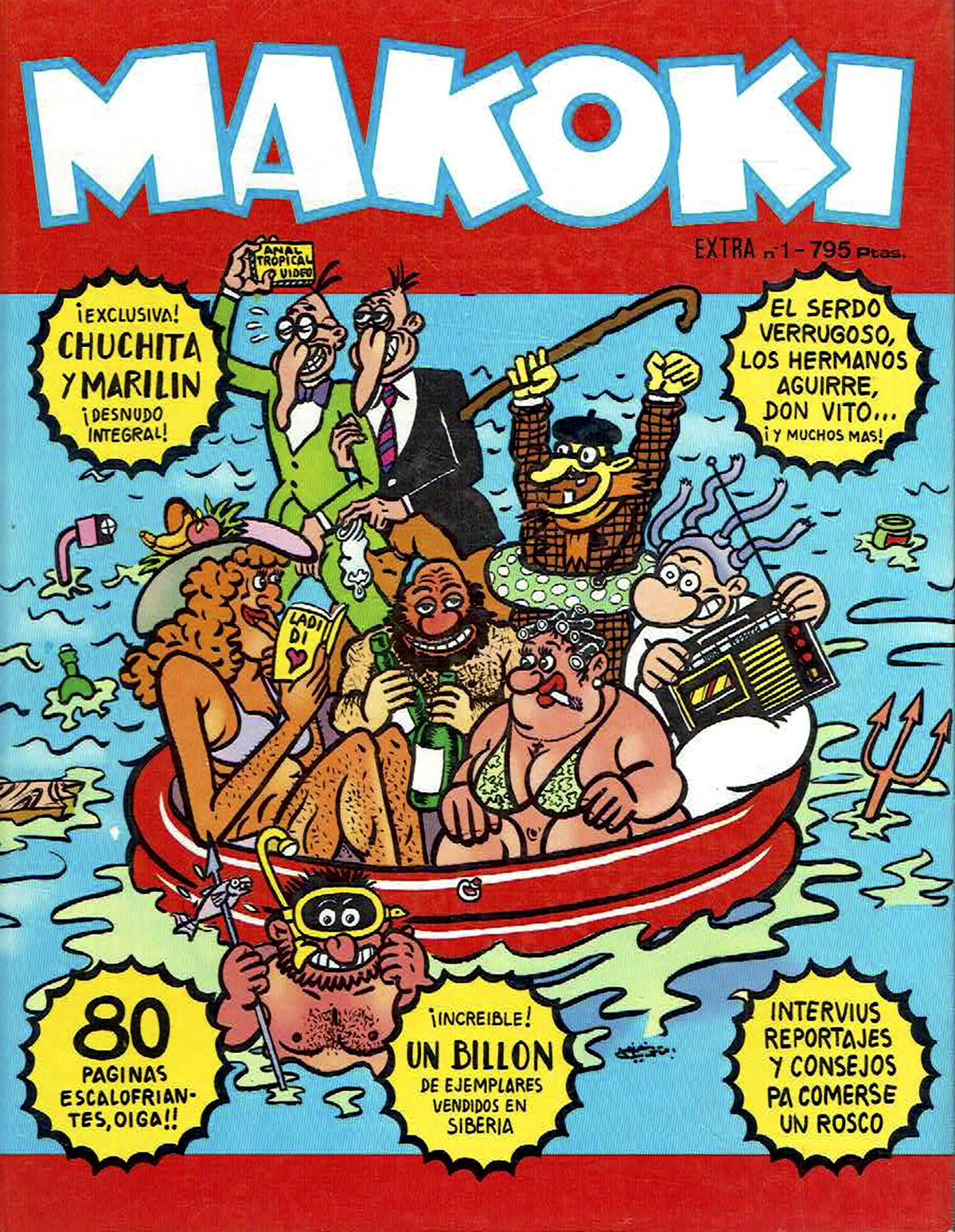Obituary Cartoonist Miguel Gallardo, creator of Makoki and founder of El Víbora, dies
El Papus, El Jueves, Por favor The satirical magazines of the Transition
In the fearful and provincial Spain that was observing the slow decomposition of Francoism and the ideological transvestism with which many relocated before the advent of a new stage, the emergence of multiple countercultural expressions in Barcelona, from the
ramblera performances of
Ocaña
,
to the music suburban band of the
Banda Trapera del Río and the
Ajoblanco
and
Star
magazines
, was a necessary punk spit on the new consensus that the Transition wanted to establish.
An underground
revolt
in which comics played a special role, with artists such as
Miguel Ángel Gallardo
(Lérida 1995), who died last Monday in Barcelona, as one of his most outstanding references.
Gallardo was, together with Juanito Mediavilla, the creator of the antihero Makoki, his most popular character but not the only one, since
Roberto España and Manolín, Perico Carambola and Perro Nick emerged from his pencil.
He was also part of the founding group in 1979 of the seminal magazine
El Víbora
.
Like a quinqui transcript of Randle McMurphy, the protagonist of
One Flew Over the Cuckoo's Nest
, the novel with which the psychotropic drug guru Ken Kesey recounted his experiences in a Californian psychiatric hospital, Makoki became a countercultural icon since he began his wanderings in 1977 with
Revuelta en el Frenopático
in the pages of the musical magazine
Disco Express
.
From that moment on, and until the publication of their last issue,
La muerte de Makoki
(1994), Gallardo and Mediavilla converted this alternative quinqui, with a popular and street language and a "chunga line" drawing -voluntarily away from the clarity of the classic European comic-, in
a countercultural and libertarian symbol
, during the post-Franco period, during the Pujolist regime and, even, in the disillusionment of felipismo.
Makoki is
a madman who fled from the asylum
to escape the electro-shock.
He is always dressed in a straitjacket and leads a gang of cretins who raise rows in that pre-Olympic Barcelona, dirtier, less touristy, more violent and less institutional than that of the post
procés
and Ada Colau.
"Inspired by the aesthetics of Popeye, Elzie Crisler Segar and
the wildest grotesques of Valle-Inclán
, Gallardo was with Mediavilla the creator of the funniest, wildest and most characteristic antihero of Spanish
underground
comics ," says writer Ignacio Vidal-Folch , who collaborated with him as a screenwriter for
Roberto España and Manolín
.
"He was one of the first to understand that the comic was
something more than entertainment
, that it was a means of communication," highlights cartoonist Siscu Bellido.
With the character of Makoki, Gallardo gave continuity and synthesized the explosion of the patriotic underground comic, which had begun with authors such as
Nazario and Mariscal
.
A scene in which Gallardo is involved when he arrives in Barcelona in 1973, initially to study at the University of Fine Arts, although he will end up at the Massana school.
The son of
a working-class family from Lleida
, Gallardo immersed himself in the most marginal comics, visiting a temple of the counterculture such as
Zap 75
, a space created by Jaume Fargas and reading comics such as
Purita
(1975), Electric Stomach (1976) or the magazine
El Rrollo Enmascarado
, which Mariscal, Miquel Farriol and Nazario launched as an iconoclastic cover letter for the Spanish
underground
comic .
In those years in which the dream of a different Spain was still safe from the perversion of power and egomania, little by little the publications that made room for this new generation of Spanish cartoonists, steeped in North American countercultural comics, multiplied -Robert Curmb, Harvey Pekar...- and who decided to break formally and aesthetically with the classic
TBO
and the Bruguera school.
Gallardo published in
Star, Butifarra, Disco Express, Cairo
and, together with Max, Josep María Beà, Montesol and other cartoonists, will be one of the founders in 1979 of the groundbreaking magazine
El Víbora
, whose original name was going to be
Goma-3
and which had as its motto «Comix for survivors»
The magazine had the business support of Josep Maria Berenguer and Josep Toutain, and reflected from the purest political incorrectness
the social and cultural life of the Transition
, when neither heroin nor AIDS had yet begun to mercilessly massacre an entire population. Spanish generation.
El Víbora
sold up to 50,000 copies a month and ceased publication in 2004, after 300 issues.
Long before its end, when the Spanish comic industry went into crisis and
Makoki
faded, Gallardo delved into his role as an illustrator and poster artist, collaborating with major American cultural magazines, including the
New Yorker
, as well as newspapers such as the
New York Times
and
La Vanguardia
.
He also wrote graphic novels, including
A Long Silence
and
Maria and I
, in which he described his close relationship with his autistic daughter.
Conforms to The Trust Project criteria
Know more
comic
Articles Iñaki Ellakuría
Barcelona
Comic Cartoonist Miguel Gallardo, creator of Makoki and founder of El Víbora, dies
BooksCristian Segura: "There is too much frivolity in the Catalan bourgeoisie"
CineIsaki Lacuesta and Carla Simón: the return of Spanish cinema to the international scene
See links of interest
Last News
Married
Work calendar 2022
How to do
The reading
Celta de Vigo - Levante

